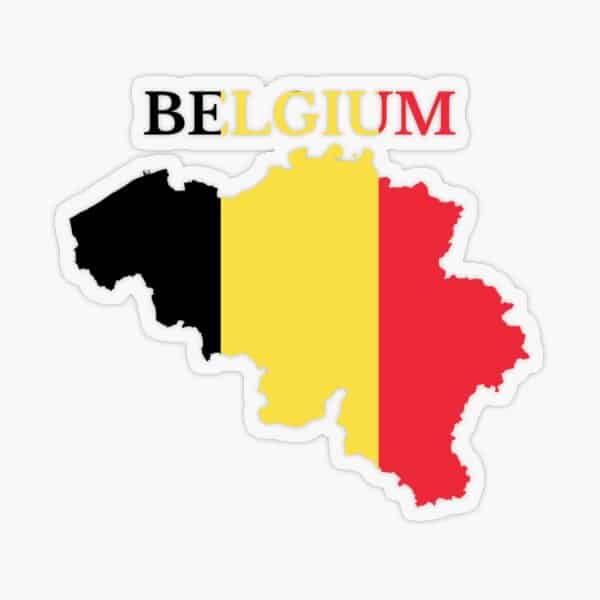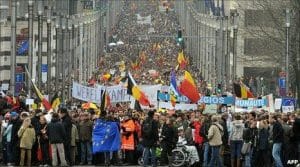Headlines
Belgium Population, Official Language And More.

Belgium prospered in the past half century as a modern, technologically advanced European state and member of NATO and the EU.
Belgium has a complex linguistic and cultural diversity, with three official languages (Dutch, French and German) and several regional dialects and identities.
Belgium has a rich artistic and cultural heritage, with famous painters, writers, musicians, architects and filmmakers.

Belgium
The population: Belgium has a population of about 11.6 million people as of 2023. It is one of the most urbanized and densely inhabited countries in the world, with about 97 percent of the population living in cities. The population is divided into two main linguistic and cultural groups: the Flemish, who speak Dutch and live mostly in the north, and the Walloon, who speak French and live mostly in the south. There is also a small German-speaking community in the east.
The landmarks: Belgium has many historical and cultural landmarks that attract tourists and visitors. Some of the most famous ones are: the Grand Place, a central square in Brussels that features Gothic and Baroque architecture; the Manneken Pis, a bronze statue of a peeing boy that symbolizes the city’s irreverence; the Atomium, a giant metal structure that represents a molecule of iron; the Royal Palace, the official residence of the king; and the Gravensteen, a medieval castle in Ghent.
The official language: Belgium has three official languages: Dutch, French and German. Dutch is spoken by about 60 percent of the population, mainly in Flanders; French is spoken by about 40 percent of the population, mainly in Wallonia and Brussels; and German is spoken by about 1 percent of the population, mainly in the eastern cantons. There are also several regional dialects and minority languages, such as Flemish, Walloon, Brussels, Limburgish and Luxembourgish.
The culture: Belgium has a rich and diverse culture that reflects its history and geography. It is influenced by various cultures, languages, religions and political movements. It has produced famous artists, writers, musicians, architects and filmmakers, such as Pieter Bruegel, Jan van Eyck, Peter Paul Rubens, René Magritte, Georges Simenon, Jacques Brel, Hergé, Victor Horta and Jean-Claude Van Damme. It is also known for its cuisine, which includes specialties such as waffles, chocolate, fries, beer and mussels.
The economic stability: Belgium has a developed and open economy that is based on trade, services and industry. It is a member of the European Union (EU) and the North Atlantic Treaty Organization (NATO). It has a high standard of living, a low unemployment rate and a moderate inflation rate. However, it also faces some challenges, such as a high public debt, an aging population, a complex political system and an energy crisis.
The GDP: Belgium has a gross domestic product (GDP) of about $530 billion as of 2020. It ranks as the 24th largest economy in the world and the 12th largest in the European Union. It has a GDP per capita of about $46,000, which is higher than the EU average. It has a mixed economy that is based on trade, services and industry.
The currency: Belgium uses the euro as its official currency since 2002. It is part of the eurozone, which consists of 19 EU member states that share the same currency. The euro is the second most traded and second most used currency in the world after the US dollar. One euro is divided into 100 cents.
The food: Belgium has a varied and rich cuisine that reflects its history and geography. It is influenced by various cultures, such as French, German, Dutch and Spanish. Some of the most popular dishes in Belgium are: moules-frites, which are mussels cooked in white wine or beer and served with fries; waterzooi, which is a creamy stew of chicken or fish with vegetables; croquettes aux crevettes grises, which are deep-fried balls of shrimp paste; stoemp, which is mashed potatoes with carrots, onions and other vegetables; and sirop de Liège, which is a thick syrup made from apples and pears.
Major cities: Belgium has several major cities that are important for its culture, economy and politics. The capital and largest city is Brussels, which is also the headquarters of the European Union and NATO. It has a population of about 1.2 million people and is known for its historic buildings, museums, parks and festivals. The second largest city is Antwerp, which is the capital of the Flanders region and the main port of Belgium. It has a population of about 520,000 people and is known for its diamond industry, fashion scene, art galleries and museums. The third largest city is Ghent, which is also located in Flanders and is a major cultural and educational center. It has a population of about 260,000 people and is known for its medieval architecture, canals, castles and churches. The fourth largest city is Charleroi, which is located in Wallonia and is a major industrial and commercial hub. It has a population of about 200,000 people and is known for its steel production, coal mining, glass making and comic books.
Major airport, sea port and schools: Belgium has several major airports that serve international passenger flights. The busiest one is Brussels Airport, which is located near Brussels and handles over 21 million passengers per year. It offers flights to over 200 destinations worldwide and is a hub for Brussels Airlines, TUI fly Belgium and Air Belgium. The second busiest airport is Brussels South Charleroi Airport, which is located near Charleroi and handles over 7 million passengers per year. It offers flights to over 100 destinations mainly in Europe, Africa and the Middle East and is a hub for Ryanair, Wizz Air and Air Corsica. Other major airports include Ostend-Bruges International Airport, Liège Airport and Antwerp International Airport.
Belgium also has several major sea ports that handle cargo and passenger traffic. The largest one is Port of Antwerp, which is located on the Scheldt river near Antwerp and handles over 230 million tonnes of cargo per year. It ranks as the second largest port in Europe and the 14th largest in the world. It offers connections to over 800 ports worldwide and is a major center for petrochemicals, diamonds, cars and containers. The second largest port is Port of Zeebrugge, which is located on the North Sea near Bruges and handles over 40 million tonnes of cargo per year. It ranks as the fifth largest port in Europe and the 25th largest in the world. It offers connections to over 400 ports worldwide and is a major center for ro-ro traffic, liquefied natural gas, cruise ships and offshore wind farms. Other major ports include Port of Ghent, Port of Ostend and Port of Brussels.
Belgium also has several major schools that offer high-quality education in various fields. Some of the most prestigious ones are: KU Leuven, which is located in Leuven and ranks as the best university in Belgium and one of the best in Europe according to various rankings. It offers courses in humanities, social sciences, engineering, science, law, medicine





